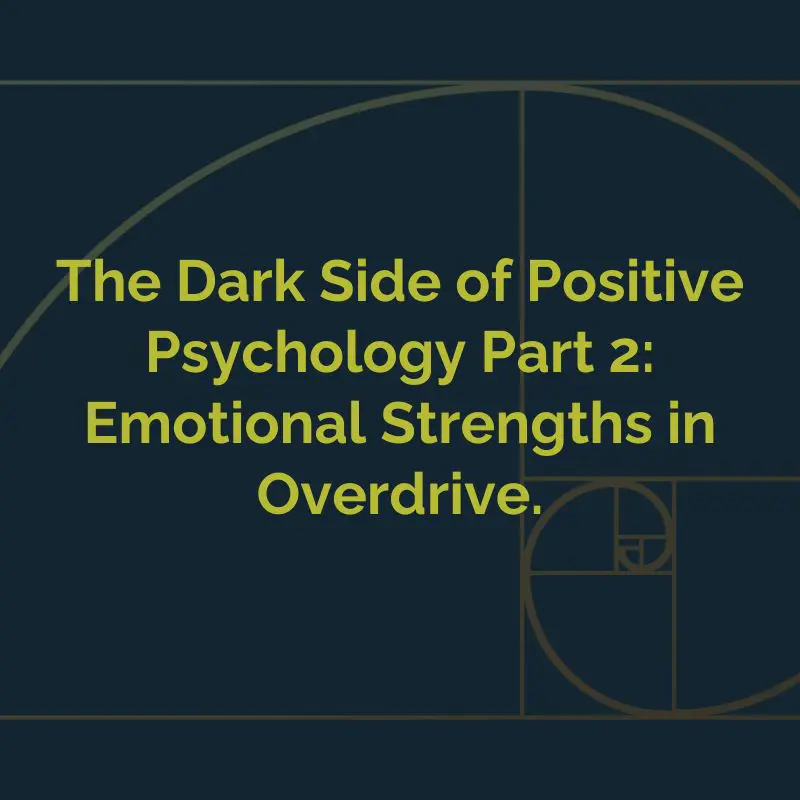Most of us would agree that personality plays a pivotal role in our day-to-day lives. With the ever-changing needs in our personal and professional environments, there also appears to be an increasing need to better balance our expression of personality – talk enough to be heard, but not so much that others feel unheard; work conscientiously enough to meet targets, but not with so much effort that you burnout; be willing to try new experiences and things, but not at the expense of coming across as reckless. As such, it’s important that you understand your personality strengths, since when you rely on them too much, they may become used in overdrive, turning them into personality risks.
What are socio-emotional strengths?
Socio-emotional Strengths are human characteristics that are optimally used in specific contexts in the right amount, at the right place, and at the right time. From a Core Drivers Diagnostic perspective, personality strengths, AKA ‘drivers’ are the dimensions of personality that have the biggest impact on one’s way of living and working (Akhtar et al, 2019).
Consequently, it is not enough to simply know what dimensions are strong, but also to have a deeper understanding of how these characteristics generally influence or drive your behaviours.
What are your drivers?
The Core Drivers Diagnostic measures 12 behavioural dispositions based on the Five Factor Model of personality. Some of the strengths of each of these dispositions are summarised below.
Candid: tough-minded, critical, able to make tough decisions
Considerate: compassionate, friendly, seek to avoid conflict
Flexible: reactive, spontaneous, adaptable
Disciplined: organised, reliable, efficient
Reserved: introspective, reflective, prefers independence
Outgoing: sociable, chatty, driven to interact
Laid Back: easy-going, humble, drive for balance
Driven: ambitious, goal-orientated, drive to achieve
Pragmatic: practical, straightforward, prefers simplistic and traditional solutions
Curious: creative, inquisitive, tolerant of differences and diversity
Passionate: self-aware, cautious, planful
Stable: calm, relaxed, self-confident
What do these drivers look like in overdrive?
Although generally, we play to our personality strengths because they bring out the best version of us, they may also result in negative outcomes if overused.
This is sometimes referred to as strengths in overdrive, which become risks. Below we list some of these overdrive characteristics:
Candid in overdrive: risks being insensitive, selfish, and manipulative.
Considerate in overdrive: risks being oversensitive, unassertive, and dependent.
Flexible in overdrive: risks being impulsive, disorganised, uncommitted, and easily distracted.
Disciplined in overdrive: risks being rigid, cautious, and perfectionistic to a fault.
Reserved in overdrive: risks being withdrawn, distant, and resist efforts to connect.
Outgoing in overdrive: risks being unrestrained, attention-seeking, and overconfident.
Laid Back in overdrive: risks being aimless, passive, and without motivation.
Driven in overdrive: risks being domineering, dominant, and overly competitive.
Pragmatic in overdrive: risks being conformist, judgemental, and closed to new ideas.
Curious in overdrive: risks being eccentric, unrealistic, and seemingly unaware of boundaries.
Passionate in overdrive: risks being intense, reactive, and insecure.
Stable in overdrive: risks being unemotional, detached, and indifferent.
Always be mindful of balance.
As mentioned in part 1, Aristotle believed in a balanced psyche where people are aware not only of their strengths, but also of their deficits and more importantly, their vices. Often, these vices are overlooked because strengths are thought of as wholly positive. However, overused strengths can result in definite negative consequences that all individuals using a strength-based approach should be made aware of.
Strengths should not only be thought of as ‘good’ characteristics that allow the individual to thrive, but should also be seen as dominant traits that individuals use to cope with everyday life.
References
Akhtar, R., Ort, U., Winsborough, D., & Chamorro-Premuzic, T. (2019). The Deeper Signals Core Drivers Diagnostic technical manual. Deeper Signals.
Share this post
Newsletter
Get up-to-date industry news right in your inbox



